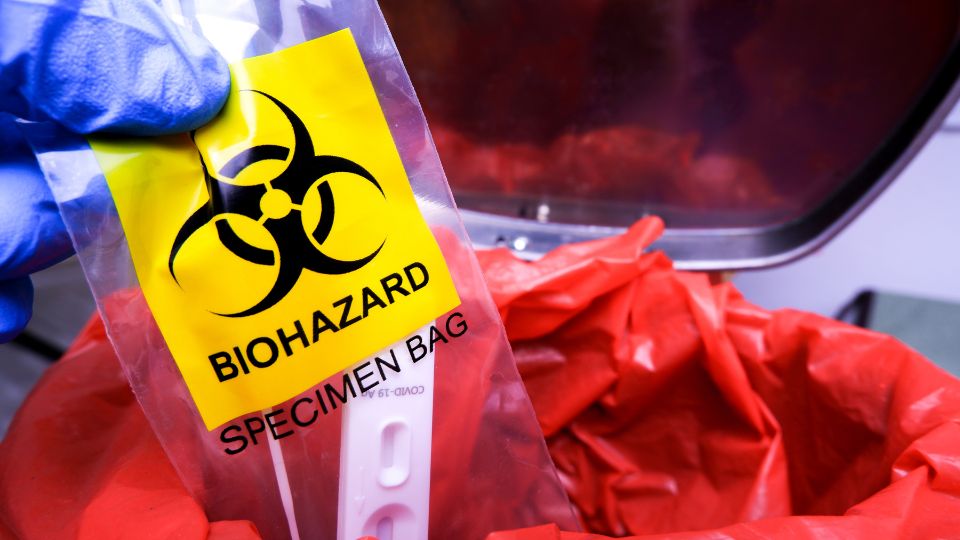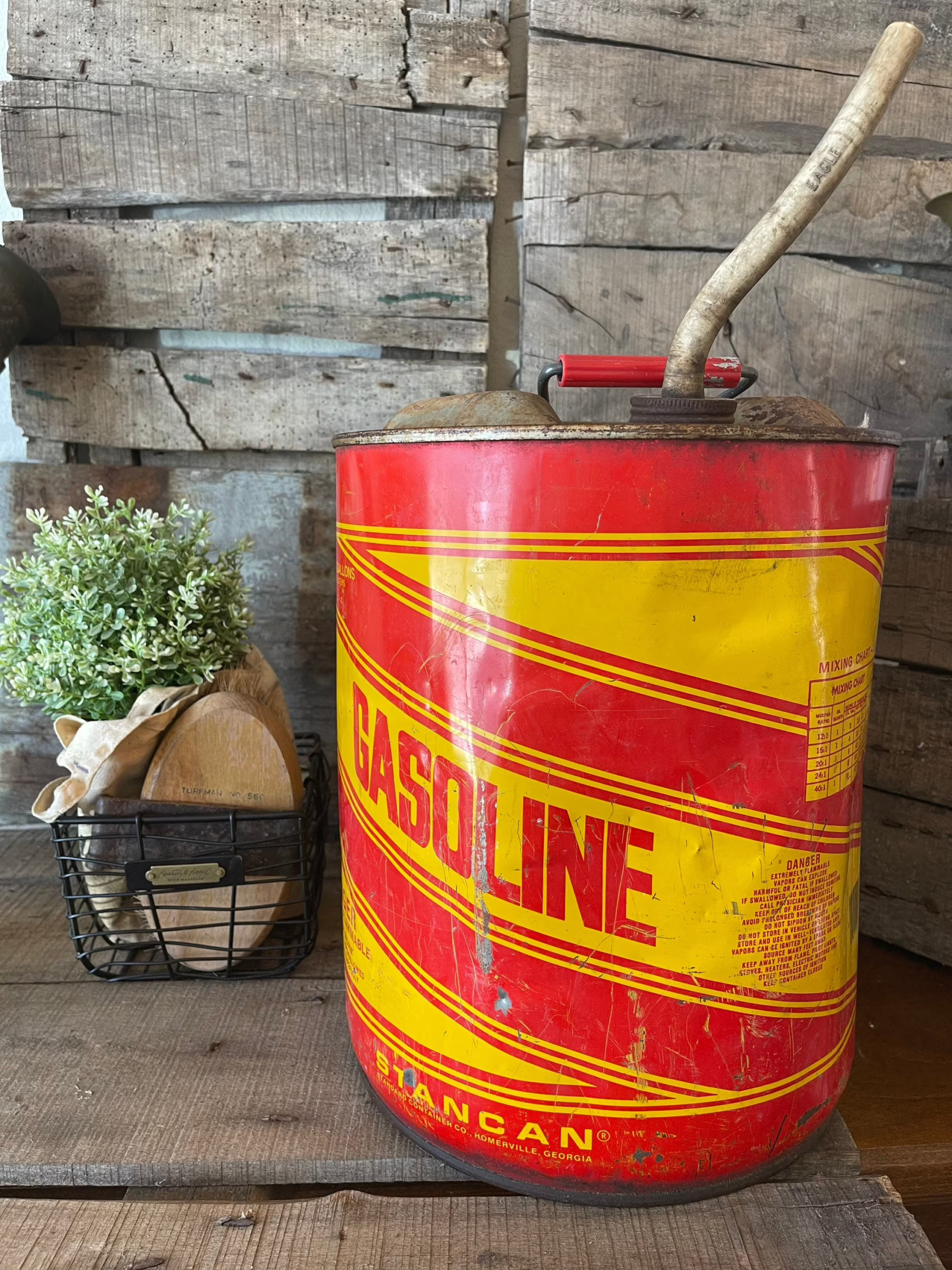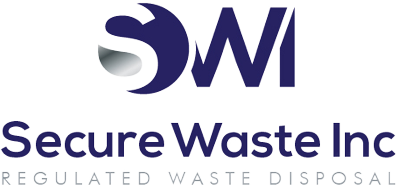What Color Is Used To Identify Biohazardous Waste In Healthcare? Expert Solutions For Healthcare Waste Color Coding From Secure Waste
Have you ever wondered why biohazardous waste is commonly associated with the colors red or orange? The choice of these colors is not arbitrary; it is influenced by regulations and guidelines set forth by healthcare organizations and waste management authorities. Secure Waste, a leader in healthcare waste management, often explores this question: What colors are designated for biohazardous waste, and what factors inform these decisions?
Let’s delve deeper into the critical world of healthcare waste management, examining the significance of color coding in this field. The bright red and orange hues ensure immediate visibility and alert personnel to potential hazards, distinguishing these materials from regular waste. Regulatory bodies, such as the Occupational Safety and Health Administration (OSHA) and the Environmental Protection Agency (EPA), have established standards that mandate using these colors to improve safety and compliance in handling biohazardous materials. Understanding the rationale behind these color choices is vital for healthcare facilities, waste handlers, and the overall protection of public health.
Before discussing biohazardous waste color coding, let’s talk about what biohazardous waste is

Understanding biohazardous waste from infectious materials to contaminated sharps is crucial for maintaining safety in our environments Lets explore what this entails and why it matters to us all
What Is Biohazard Waste?
Biohazard waste refers to materials contaminated with infectious agents or substances derived from biological organisms that significantly threaten human health and safety. This type of waste encompasses a range of hazardous materials, including regulated medical waste, biohazard incident waste, trauma scene waste, human remains management waste, prion or animal prion waste, waste generated from animals, and contaminated food supplies. Additionally, it includes samples of microorganisms, toxins from biological sources, and other materials that could adversely affect human health or the environment.
Various facilities generate biohazardous waste, including hospitals, outpatient clinics, nursing homes, dental offices, and even specific private households. These establishments often produce materials used in medical treatments or care that may be infectious or potentially harm individuals, such as sharp objects like needles and blades. Certain types of medical waste can also be classified as hazardous due to their chemical properties or may contain low-grade radioactive materials, necessitating special handling and disposal procedures.
In emergencies, such as natural disasters or public health crises, the volume of medical waste generated can increase dramatically, creating challenges for safe disposal. It is imperative that this waste is segregated appropriately and managed with specialized handling techniques to ensure safety.
While waste from trauma scene cleanups might not always be classified as biohazardous, it is prudent to treat it as such to prevent any potential health risks. Compliance with state and federal regulations, particularly those set forth by the Occupational Safety and Health Administration (OSHA), is crucial in disposing of all biohazardous waste. Proper disposal procedures are essential to safeguard public health and the environment, ensuring that biohazard waste is handled with the utmost care and responsibility.
What Color Is Used To Identify Biohazardous Waste?
Secure Waste emphasizes that biohazardous waste disposal necessitates using distinctive red bags and containers, commonly observed in healthcare environments. These receptacles are specifically engineered to contain materials that may carry infectious agents safely, and their vivid coloration serves a vital purpose.
The bright red hue adheres to the international biohazardous waste standard, promoting consistency and safety across diverse facilities globally. Additionally, the prominent biohazard symbol on these bags identifies the nature of the waste and the requisite precautions that must be observed.
Biohazardous waste is placed within these red bags to ensure enhanced protection. Subsequently, they are secured inside robust, leak-proof containers. This layered containment strategy is essential for effective management.
Adopting red bags and containers extends beyond safety; it also enables facilities to comply with critical regulations governing the handling and disposal of medical and biological waste. Following these guidelines contributes to a safer environment for all stakeholders. It is a serious responsibility shared by all, and collectively, we can ensure that biohazardous waste is managed with the utmost confidence and diligence.
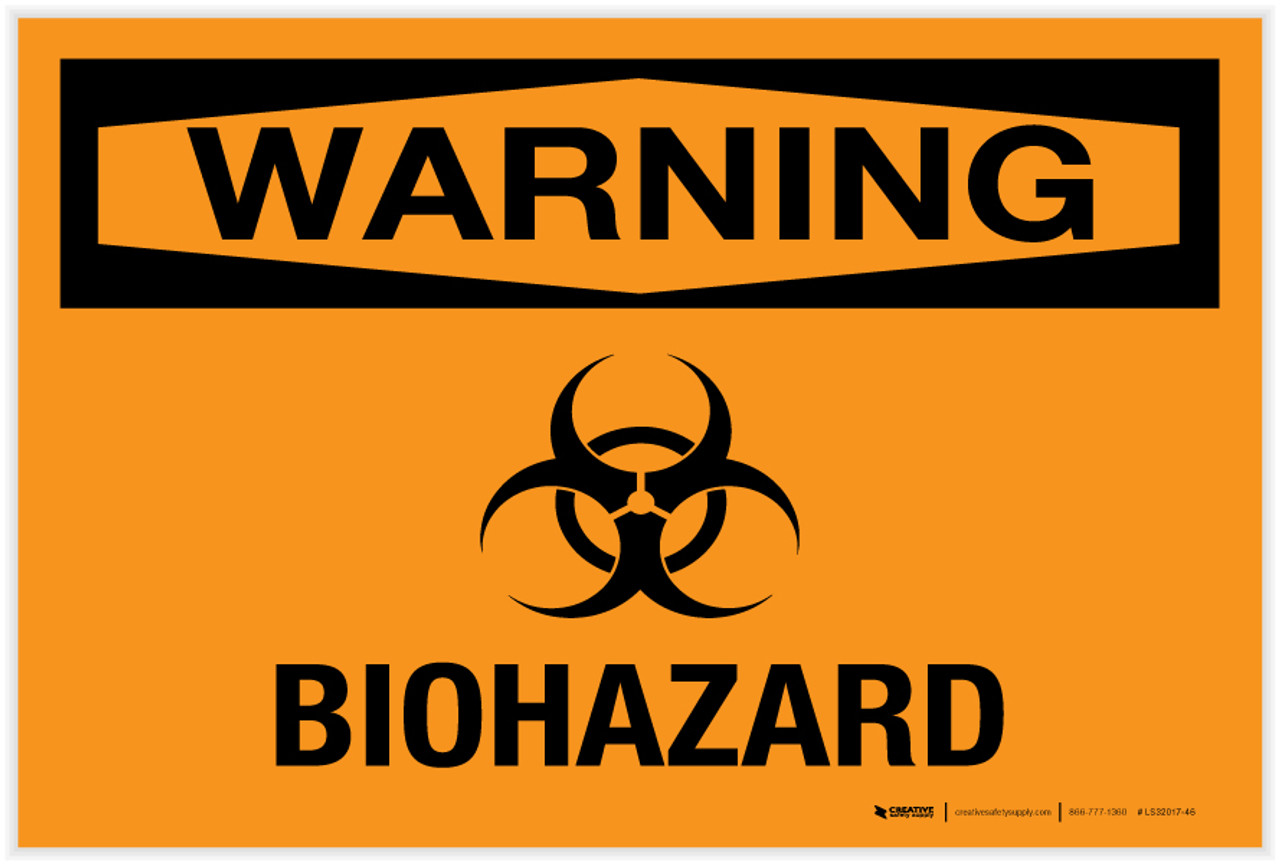
Biohazardous Labeling Color Explained
By the Occupational Safety and Health Administration’s (OSHA) Bloodborne Pathogens Standard (29 CFR 1910.1030), it is mandatory to affix warning biohazard labels to any containers that hold regulated waste, as well as those used for the storage, transportation, or shipping of blood or other potentially infectious materials (OPIM). The standard specifies that the biohazard symbol, consisting of a trefoil design, and the accompanying text must be displayed in a color contrasting with a fluorescent orange or orange-red background to ensure visibility and recognition. For instance, containers such as centrifuges should prominently feature a visible biohazard label, as should any transport containers associated with these materials.
To further enhance laboratory safety, the Biohazard Warning Sign is critical in restricting access to areas where biohazards are present, thereby communicating the specific agents in use and outlining stringent entry and exit requirements. It is vital that the principal investigator (PI) or designated laboratory supervisor correctly identifies the hazards associated with their research and enforces restrictions on access to these areas. Additionally, they must promptly notify emergency and support personnel about potential risks, ensuring preparedness and a swift response in case of incidents.
The Biohazard Warning Sign must be permanently affixed to the entry doors of laboratories or rooms where biohazardous materials are handled. This ensures that individuals are immediately aware of the risks before entering these spaces.
Regarding biohazardous waste management, it is essential to use waste bags that are either bright red or transparent; the use of orange bags is expressly prohibited. To avoid confusion, these bags must be labeled with the words “Biohazard Waste” or display the biohazard symbol alongside the word “Biohazard. Additionally, the bags should be designed for single use, impervious to moisture, and manufactured from robust materials to prevent ripping, tearing, or bursting under normal handling conditions. This ensures the safe containment of biohazardous materials and minimizes the risk of exposure to laboratory personnel and the general public.
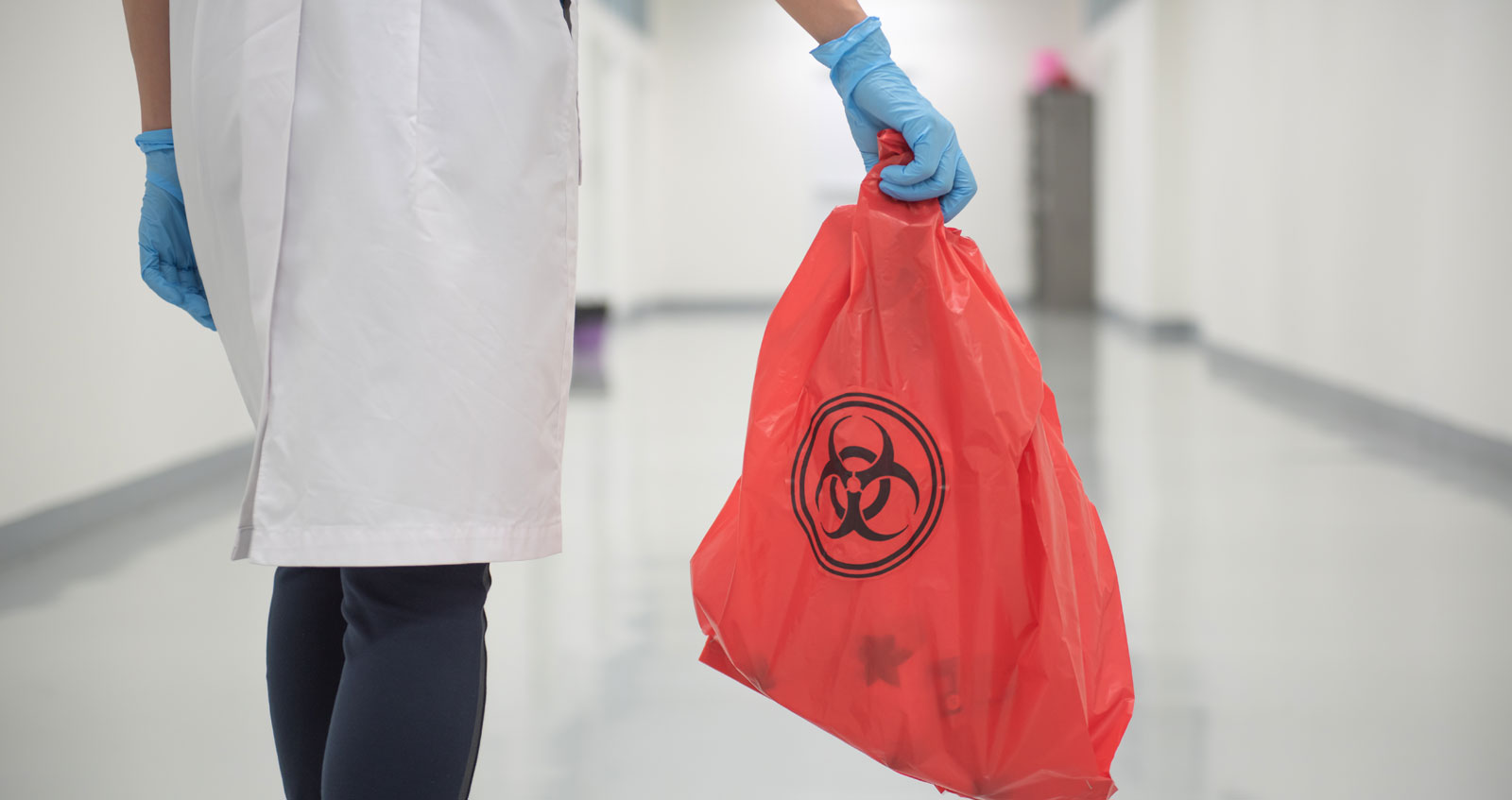
Biohazardous Bags Color Explained
Proper biohazardous waste management is essential in medical and research settings, particularly with color-coded waste bags that help ensure safety and compliance. Red biohazard bags are specifically designated for the disposal of regulated medical waste, which falls under the Department of Public Health (DPH) jurisdiction. This type of waste is generated through various activities, including:
- The diagnosis, treatment, or immunization of humans and animals
- Research efforts focused on the diagnosis, treatment, or immunization processes for both humans and animals
- The production of biological products
In some instances, you might encounter a clear biohazard bag. These bags are designated for biohazardous waste that, while still a concern, does not fall under the specific regulations of the DPH. Instead, this waste may be governed by alternative biosafety standards. Laboratories may utilize clear biohazard bags only after a thorough assessment within the framework of the Biosafety Work Authorization confirms the waste as nonregulated. Should there be significant alterations in research protocols or practices within such laboratories, the laboratory must re-evaluate and confirm the appropriate identification and handling of its waste materials.
The colors of the biohazardous bags serve as a crucial visual distinction, clearly differentiating the DPH-regulated medical waste (represented by red bags) from the non-DPH-regulated biohazardous waste (indicated by clear bags). The color of the bag does not reflect the level of biological risk associated with the waste, nor does it dictate the method of final treatment. Regardless of color, both bags are treated and disposed of in the same rigorous manner, ensuring the safe management of biohazardous materials.
Now that you have a more comprehensive understanding of why biohazardous colors are red or orange, don’t hesitate to contact Secure Waste.
We provide reliable, compliant, eco-friendly medical waste disposal solutions for your facility’s needs. We have expertise in biomedical, hazardous waste, and Sharps container disposal. In addition, we provide customized waste management plans, including secure collection and transport, and sustainable disposal practices.
Contact us today for a FREE Waste Assessment, or request a quote online!
**Disclaimer**: This information is provided for reference purposes only and should not be considered as legal advice or factual information at the time of your reading. Regulations frequently change and can vary from state to state. For the most current information, we encourage you to contact your local regulatory authorities or Secure Waste directly. Please note that Secure Waste is not liable, in part or in whole, for any information contained on this page or website.

Expert Medical Waste Management: With over 25 years of industry experience, Secure Waste is a trusted local leader in hazardous and biohazardous waste disposal across Maryland, Virginia, and Washington, D.C. Specializing in medical waste management, sharps needle disposal, and biohazard waste removal, the company ensures full compliance with federal, state, and local regulations while prioritizing environmental sustainability.
The company also offers additional services, including secure document shredding and sharps container sales, providing comprehensive solutions for healthcare facilities and businesses. Our cost-effective services help clients maintain regulatory compliance without unexpected costs.
With a commitment to customer satisfaction, Secure Waste offers tailored waste management plans that align with industry best practices. Their team of experts provides reliable, timely, and compliant services, making them the preferred choice for medical waste disposal. For a free waste quote or more information, visit www.securewaste.net
